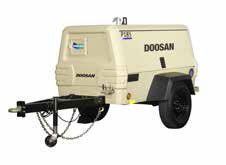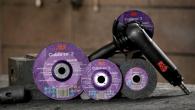Hydraulic Power Units vs Pneumatic Compressors

In the world of industrial machinery and equipment, both hydraulic power units and pneumatic compressors play crucial roles in powering various applications. Although they may appear similar at first glance, these systems operate on different principles and offer distinct advantages.
Hydraulic Power Units:
Hydraulic power units (HPUs) are mechanical devices that convert mechanical energy into hydraulic energy, allowing the transmission of force through the use of pressurized fluid. These units consist of a reservoir, a pump, valves, actuators, and a control system.
Pneumatic Compressors:
Pneumatic compressors, on the other hand, are devices that generate and store compressed air. They utilize mechanical energy to compress air, which can then be used for various applications.
Understanding the Differences:
HYDRAULIC |
PNEUMATIC |
|
Contamination Risks |
Risk of hydraulic oil leaks from faulty valves, seals or burst hoses. Hydraulic tools don’t produce exhaust and their power sources can be stationed remotely. | A very clean system, suitable for food manufacturing processes and other processes which require no risk of contamination. However, they can atomize small droplets of lubricating oil into the surrounding atmosphere. |
Movement of Cylinders |
Hydraulic cylinders move more slowly as hydraulic oil is a viscous substance and requires more energy to move. | Pneumatics offer rapid movement of cylinders and have the great advantage of availability in very small sizes. This is mainly due to air compressor flow rates. Air is very agile and can flow through pipes very quickly and easily with little resistance. |
Ability to Change Direction |
Oil must be routed back to the reservoir making them slower to change direction or alter state quickly. | Cylinders and valves can dump their compressed air straight to the atmosphere when they need to change direction or alter their state quickly. |
Working Force |
Hydraulics have more force making them suitable for heavy duty work such as cutting through rock & concrete, driving posts or spikes, or pumping a flooded culvert. | Pneumatics does not have the potential force that hydraulics has to offer. The lifting or moving of heavy loads is not best suited to pneumatics. |
Movement |
Hydraulics can smoothly lift and move loads because the hydraulic oil is not compressible. | Air can become jerky and spongy as the air pressure fluctuates with cylinder movement or load changes, as it is compressible. In general a much larger pneumatic cylinder is needed to obtain the same force that a hydraulic ram can produce. |
Cost and Efficiency |
Hydraulic tools are inherently more efficient, meaning they require less energy to perform the same work as alternative tools, saving time and money. | In terms of energy costs pneumatics is more costly than hydraulics, this is mainly due to the amount of energy lost through heat production while compressing air. |
Noise Levels |
Hydraulic tools are significantly quieter than comparable pneumatic alternatives | Noise of operating pneumatic tool may disturb surroundings (eg: residential area) |
Proportions |
Since compressed oil transfers far more energy than compressed air, nothing packs as much pound for-pound punch as hydraulic. That means hydraulics cans be a smaller, lighter tool design and deliver more power than even the biggest pneumatic alternatives. | Pneumatics must be larger and heavier to get as much power as a Hydraulic unit. |
Case Study: STANLEY HP28 (HYDRAULIC) VS 185 COMPRESSOR (PNEUMATIC)
 |
 |
|
| STANLEY HP28 | 185 COMPRESSOR | |
| Fuel Consumption | 2.5 gallons per hour | 2.8 gallons per hour |
| Length* | 37.5 in | 137.7 in |
| Width* | 25.75 in | 68.5 in |
| Height* | 30 in | 2.3 in |
| Working Weight* | 360 lb | 2505 lb |
| Breaking Performance | 2 Breakers @ 8 GPM | 2 Breakers @ 90 PSI |
Discover the Stanley Hydraulic TWIN8 Mobile Power Unit at BST Group here.
- The Best Solvol Alternative: Gritmitts
Looking for the best Solvol alternative? Try the Australian made Gritmitts pumice soap bar to clean ...
- All About Sanding Belts - Which One Is Best For Your Job?
Precision and efficiency are paramount in construction and engineering. Whether smoothing rough edge...
- 3M Cubitron 3 - Produce More With Less!
Discover the all new 3M Cubitron 3 performance abrasives at BST Group. Shop grinding wheels, cut off...



